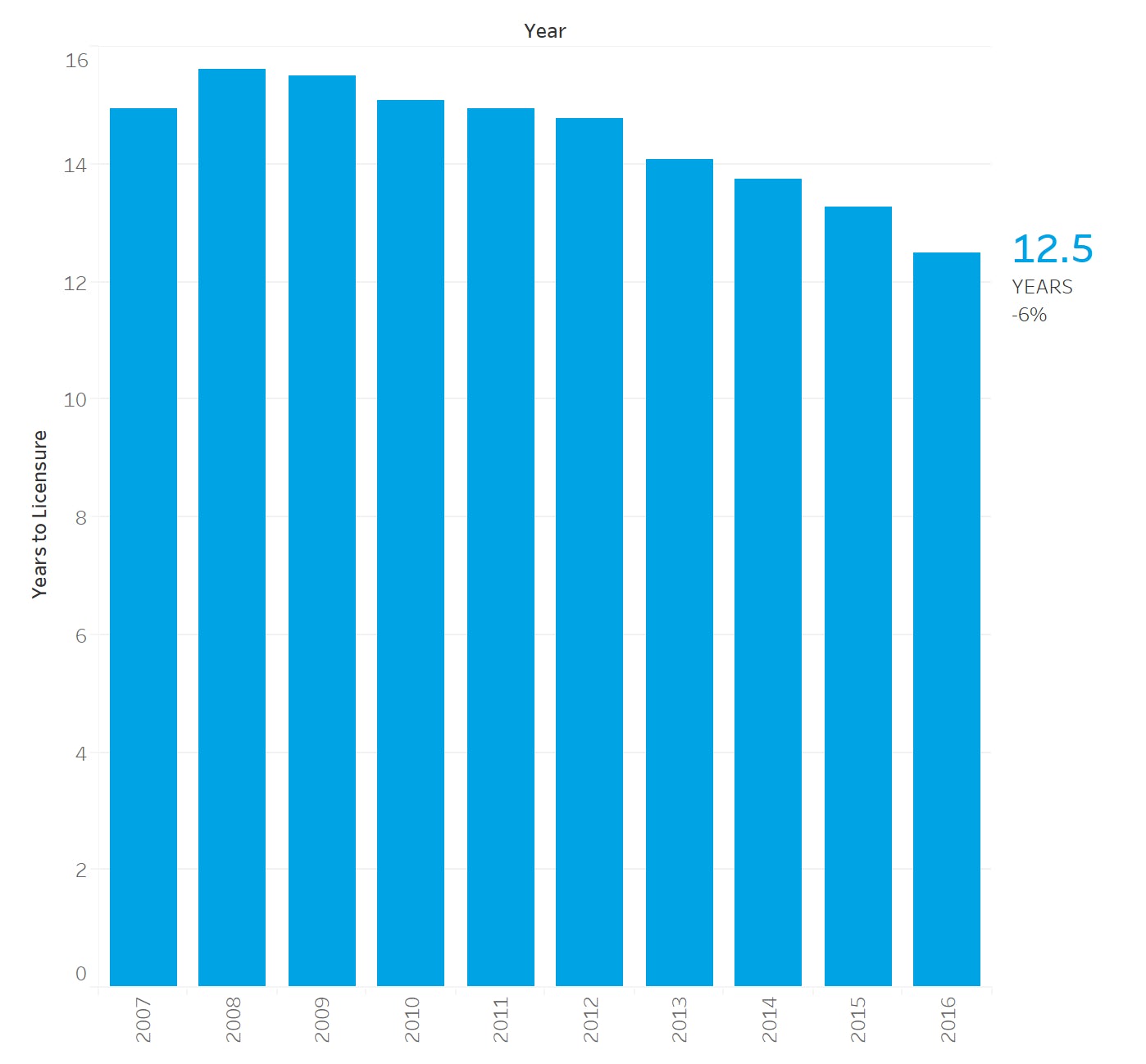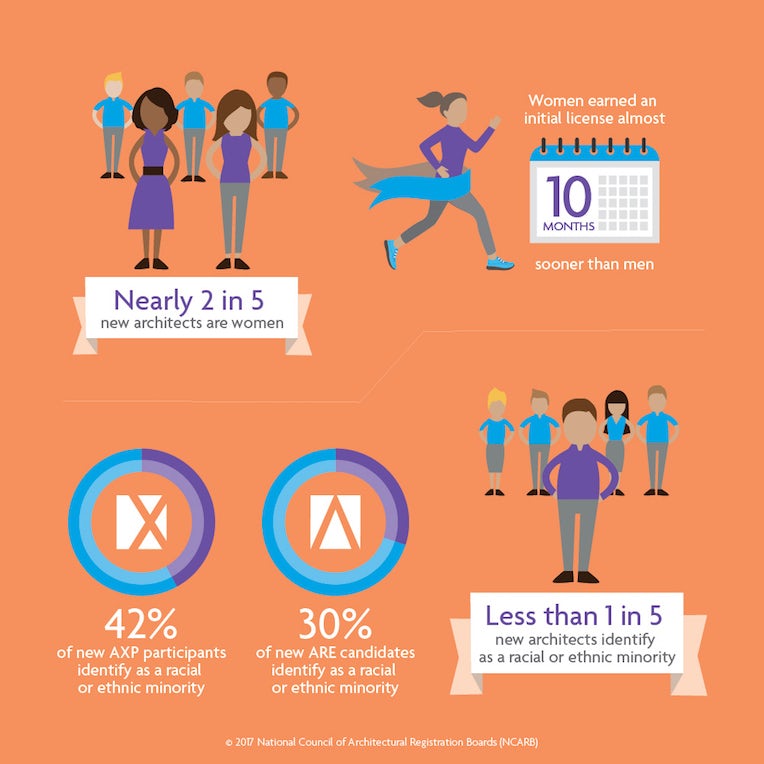Being a young architect can be a pretty isolating experience. Slaving away behind a computer for eight (or 10 … or 12 … or more … ) hours a day isn’t necessarily the greatest way to feel like you’re part of a community, and it can be hard to get a sense of where the profession is going. Fortunately, we can at least look to the annual NCARB (National Council of Architectural Registration Boards) survey to give us concrete data about trends in the field.

Time it takes to get licensed
If you are feeling like the road to becoming an architect is a long slog, you’re not crazy. The latest numbers say that it takes, on average, 12.5 years to get licensed, measured from the start of schooling to the day the stamp arrives. But, hey, greatness doesn’t happen overnight. And while 12 years of work is no joke, that’s three years shorter than the average time to licensure in 2008. Over the past decade, architects have been getting licensed faster and faster, and 2016 set a new record for how quickly architects were making it through the process. It’s getting better!

More architects are completing experience requirements.
Making the process faster and easier seems to be a strong goal for NCARB. Starting in 2009, the number of potential architects who were completing the requisite hours of work experience began to plummet. This trend reversed in 2014 when NCARB changed its regulations and allowed licensing candidates to log experience hours from longer than eight months before the date they submit them. In 2015, NCARB reduced the number of required hours from 5,600 to 3,740, and in 2016, the board condensed the 17 experience areas into six; both changes seem to have supported the record rise in the number of potential architects completing their experience requirements.
The biggest change in 2016 was the introduction of the new ARE (Architectural Registration Examination). The number of candidates who passed the ARE slightly dropped as a result, which could be because proper study materials for the new ARE 5.0 are still being perfected or because there were fewer test-takers overall as people waited to take the new set of exams. Because the new ARE debuted so recently, it’s still too early to have enough data to compare metrics on the ARE 4.0 and 5.0, but over the next few years, new trends should become legible.

One positive trend is the increasing amount of women in architecture at all professional levels. Equity is still a long way away at the current pace of change, but the trend is at least in the right direction. Racial and ethnic equity slightly improved last year, but minorities are still disproportionately underrepresented among licensed architects. For a more in-depth look at this issue, check out an earlier article here.
Becoming an architect is hard. Once you get there, reduce your headaches when it comes to specifying by joining Architizer’s marketplace for building-products. It’s free for qualified architects.
All graphics from NCARB




